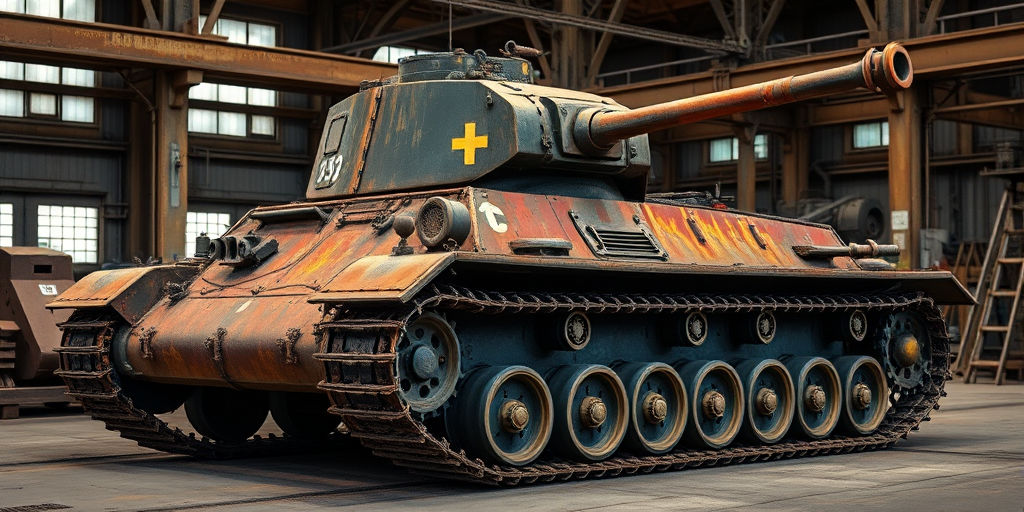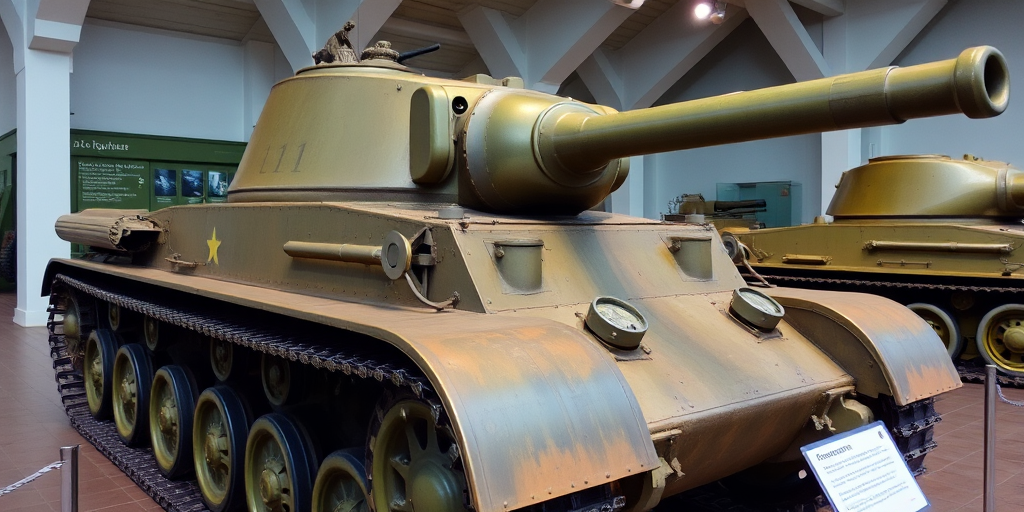Ever wondered how a modest support tank transformed into Germany’s most formidable war machine? The Panzer IV’s evolution from a 1930s prototype to the backbone of Germany’s armored divisions reveals extraordinary innovation and tactical foresight. This post unpacks its technical breakthroughs, design modifications, and battlefield exploits while challenging traditional views on early mechanized warfare. Prepare to delve into the engine room of history, where engineering brilliance and strategic evolution merged to define a legend.
Design Evolution and Engineering Breakthroughs of The Panzer IV: Germany’s Backbone Tank in WWII

The Panzer IV’s development journey reflects a relentless pursuit of engineering innovation driven by tactical necessity. Early iterations, such as the Panzer IV A, leveraged a 230-horsepower engine, a welded hull, and modest armor. This baseline design provided a flexible platform that balanced mobility with protection while serving as a testbed for real-world combat feedback. Lessons learned from early conflicts, including the Spanish Civil War, spurred crucial modifications that defined subsequent improvements.
Building on its initial blueprint, the Panzer IV B variant emerged in early 1938 with significant enhancements. Increased frontal armor and a more powerful 265-horsepower engine addressed the evolving demands of armored warfare. Incremental upgrades across variants C, D, and E incorporated refined observation ports, a redesigned commander’s cupola, and additional side skirts, all of which improved battlefield survivability and operational efficiency.
- Initial design features
- Upgrade in engine power
- Armor enhancements
- Turret design changes
- Incorporation of field modification experiments
Tactical feedback from the battlefield directly informed these modifications, resulting in a platform that continuously evolved to meet emerging threats. Revolutionary turret mechanisms were integrated to enhance crew visibility and target engagement, while the systematic upgrade in engine performance ensured sustained mobility under increasing combat stress. This evolutionary process exemplifies how engineering breakthroughs and practical combat experiences combined to create a design that was as effective as it was innovative during WWII. The Panzer IV’s adaptability through variant-specific modifications underscores its pivotal role as Germany’s backbone tank, where each improvement fed directly back into subsequent design refinements.
Combat Performance and Battlefield Role of The Panzer IV: Germany’s Backbone Tank in WWII

The Panzer IV quickly established itself as a formidable force after replacing the Panzer III, demonstrating remarkable battlefield resilience and consistent crew performance. Its deployment across varied terrains showcased its adaptability and durability against evolving enemy armor.
Combat operations showcased how tactical refinements enhanced the Panzer IV’s operational impact. The tank was pivotal in countering the increasingly armored Soviet T-34 and KV-1 models as its upgraded long-barreled gun improved penetration capabilities during mid‐conflict offensive strategies. With over 8,500 vehicles produced and significant losses recorded in major campaigns, its performance underscored the tank’s central role in critical battles.
- Campaign in Poland
- Battle of France
- North African operations
- Operation Barbarossa
These campaigns highlight the strategic deployment and vital contributions of the Panzer IV, which consistently proved its mettle in diverse combat environments and under harsh battlefield conditions.
Final Words
In the action, the article traversed the Panzer IV’s early inception, design breakthroughs with enhanced engines and armor, and technical specifications that evolved with modern warfare needs.
It highlighted operational use in diverse campaigns and its lasting impact on armored strategies.
The Panzer IV: Germany’s Backbone Tank in WWII remains a testament to engineering prowess and battlefield resilience.
These insights underscore its historical significance and contribute to a nuanced understanding of mechanized warfare evolution.
FAQ
Was the Panzer IV a good tank?
A: The Panzer IV proved highly effective as Germany’s primary battle tank throughout World War II. Its adaptable design allowed for continuous upgrades in armor and firepower, enabling it to remain competitive against Allied tanks until 1945.
What was Germany’s most feared tank in WWII?
A: While the Tiger I and Panther tanks garnered more intimidating reputations, the Panzer IV’s reliability, adaptability, and widespread deployment made it Germany’s most consistently effective tank throughout the war.
How was the Panzer IV used in WWII?
A: The Panzer IV served as Germany’s backbone tank across all major campaigns. It performed infantry support operations early in the war before evolving into an effective tank hunter with its upgraded 75mm KwK 40 gun.
What were the key technical specifications of the Panzer IV?
A: The final Panzer IV variant featured a 285-horsepower Maybach engine, 80mm frontal armor, and a long-barreled 75mm KwK 40 gun. It could achieve speeds up to 38 km/h and effectively engage targets at 1,500 meters.
How many Panzer IVs were produced?
A: German factories produced over 8,500 Panzer IV tanks between 1936 and 1945, making it Germany’s most-manufactured tank of World War II. Approximately 6,000 were lost during combat operations.
What variants of the Panzer IV were developed?
A: The Panzer IV evolved through multiple variants from Ausf.A to Ausf.J, with each iteration introducing improvements in armor, firepower, and mobility. The Ausf.G, H, and J variants were the most widely produced models.
